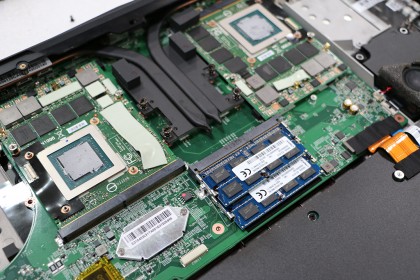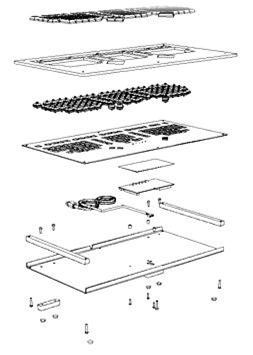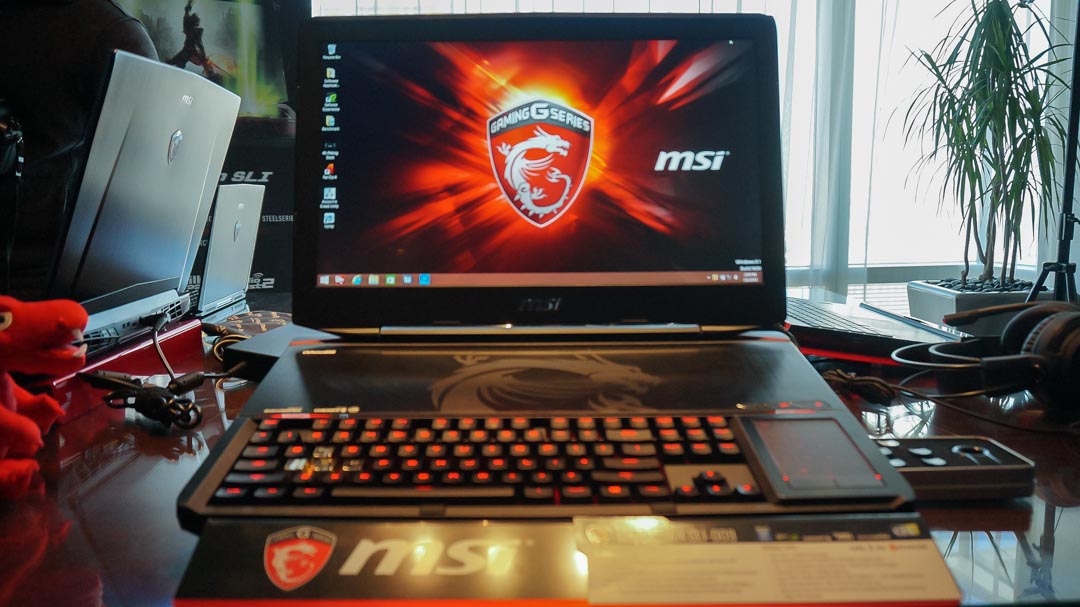How MSI designed the insane GT80 Titan gaming laptop

Ready for the long haul
The Titan takes this upgradable concept to the next level, even giving users the option to replace the rig's two graphics cards. It's an unconventional move; the laptop's two Nvidia GTX 980M GPUs aren't soldered permanently to the motherboard. Instead, they're connected via removable MXM cards, which plug into the machine's logic board like express ports on a full-size desktop.
MXM cards, of course, are not new. In fact, all of MSI's laptops models were originally built with the technology until the company started producing its thin and light GS line of gaming machines. The swappable graphics connection isn't ideal for every laptop as it requires a minimal height to make room for the connector and cooling unit.
However, this isn't a problem for a 1.93-inch thick machine such as the GT80 Titan. To take advantage of this modular architecture, MSI offers graphics card upgrades for users who want to keep their machines up to date.

"Gaming notebooks are a big investment for anyone, and it's not fun to spend a lot of money to see your expensive piece of kit become almost obsolete with the launch of a new graphics card," Chun said. "We're trying to give our users the options to update their systems, so their systems can stay on the bleeding edge for longer."
Unlike a soldered connection, the graphics cards in the Titan can be removed completely and replaced using a MSI GPU upgrade kit to keep up with modern technology. But upgrading your graphics isn't just a matter of adding a new circuit board; these upgrade kits also come with a new thermal cooling module.
"The whole reason we use a different thermal model is depending on the motherboard and the chipset, sometimes there is a tiny difference in height even if the MXM card's width is the same," Chun explained. "We wanted to make sure the thermal models that ship along with [the part] are not so high that it's not touching the chip and if it's too low, then it's really crushing the chip."
"We've left enough room to make sure the heat dissipation will be good enough for the next generation [of GPUs] as well."
Sign up for breaking news, reviews, opinion, top tech deals, and more.
Scaling the giant
The MSI GT80 Titan already holds accolades for being the first-ever gaming laptop with a mechanical keyboard and for being extremely upgradable, yet oddly enough it isn't the biggest 18-inch laptop in the world - the Alienware 18 still holds that honor. Meanwhile, MSI boasts the Titan is actually smaller than some 17-inch laptops.
In fact, the Titan was meant to be a 17-inch gaming laptop one point.
"We originally wanted to put this inside a 17-inch gaming laptop," Chun said. "But the width of the unit was not big enough and we did not want to make the unit fat or too thick with a 17-inch chassis."

However, going with a bigger chassis also presented the challenge of making the machine inherently bigger.
"The first generation when I first heard about this was, like three years ago, really was like a brick," Chun recalled.
"All the product managers were like, 'We can't sell something like this.' We all knew this was a beast of a laptop, but we took a lot of time trimming down the internals and figuring out better heat pipes."
"That's why we spent so many years on designing it and laying everything out," Chun said. "It wasn't easy, to tell you the truth."
- Will the MSI GT80 Titan become on of the best gaming laptops

Kevin Lee was a former computing reporter at TechRadar. Kevin is now the SEO Updates Editor at IGN based in New York. He handles all of the best of tech buying guides while also dipping his hand in the entertainment and games evergreen content. Kevin has over eight years of experience in the tech and games publications with previous bylines at Polygon, PC World, and more. Outside of work, Kevin is major movie buff of cult and bad films. He also regularly plays flight & space sim and racing games. IRL he's a fan of archery, axe throwing, and board games.